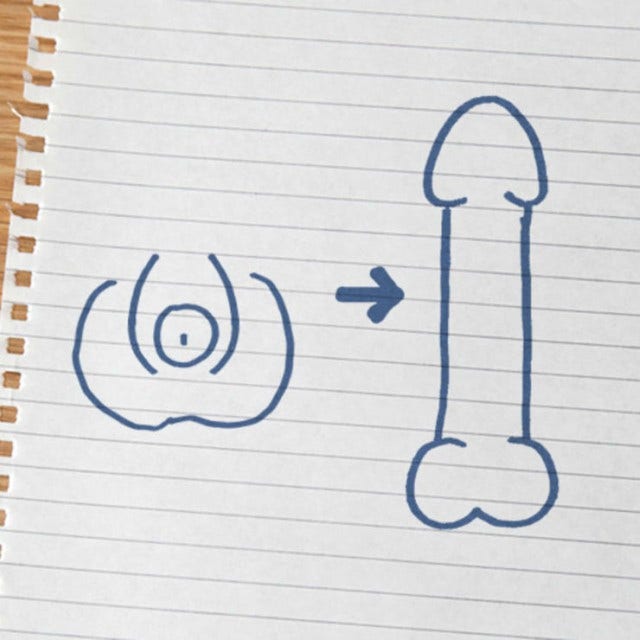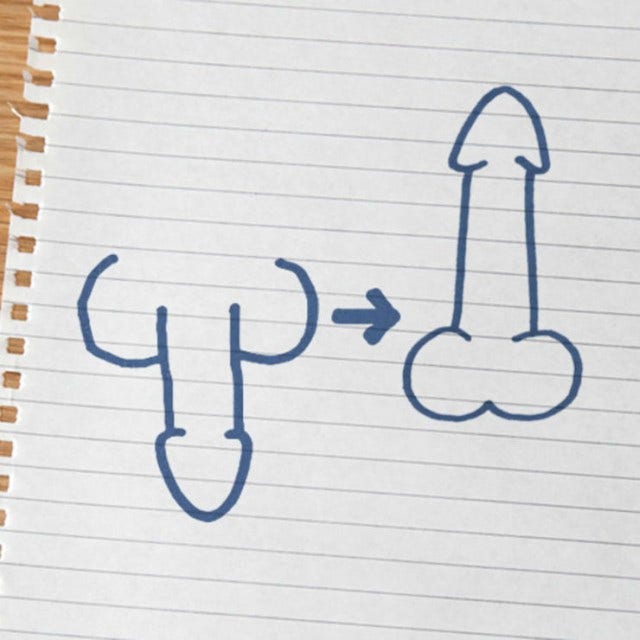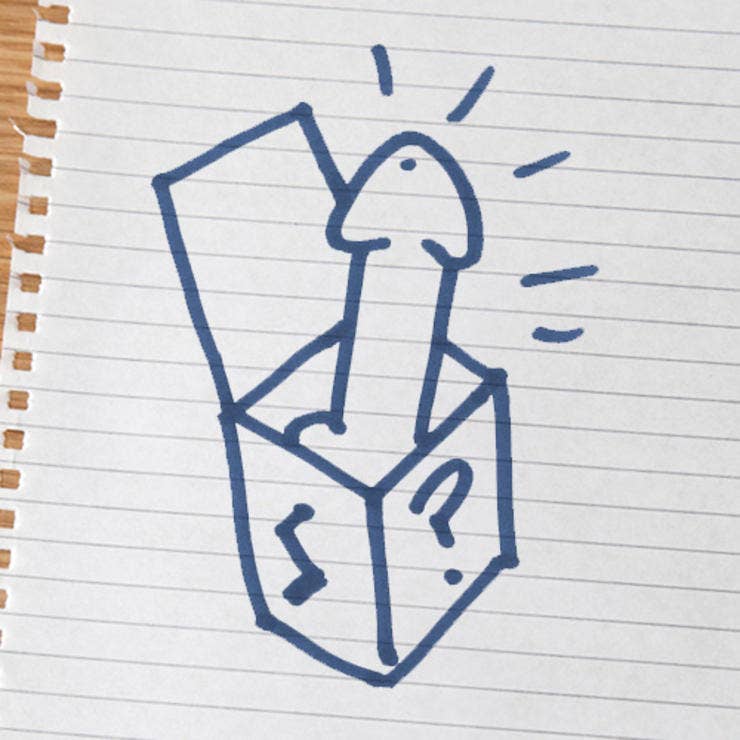There Are 8 Types Of Penises, Apparently: Which Kind Does He Have?
And pointers on how to handle each of them.
 weheartit
weheartit By Annie Daly
It’s no secret that every man’s penis is a little bit different. The real question is this: How many kinds of penises are there?
We asked three experts: Ian Kerner, Ph.D., author of She Comes First; Debby Herbenick, Ph.D., a sexual health educator for the Kinsey Institute; and Joseph Alukal, M.D., assistant professor of urology and director of male reproductive health at NYU Langone Medical Center, for the downtown low-down.
1. Circumcised
 Women's Health
Women's Health
Description: The skin covering the penis (a.k.a. the foreskin) has been removed.
Fun fact: “This is the most common kind of penis in the United States: “About 90 percent of men over 20 are circumcised,” says Alukal.
Tip: Previous research has found that circumcised penises can be less sensitive than circumcised ones (since they don't have the sensitive foreskin). But since you’re probably used to this kind of penis anyway, just proceed as per usual.
2. Uncircumcised
 Women's Health
Women's Health
Description: The foreskin is left intact.
Fun fact: Uncircumcised men have to work a bit harder to keep it clean down there since bacteria can get trapped in the extra skin.
Tip: As the penis goes from flaccid to erect, it helps to roll back the foreskin to stimulate him more.
3. Grower
 Women's Health
Women's Health
Description: Penises that are bigger when erect than they are flaccid.
Fun fact: An international Men's Health survey found that 79 percent of men have growers.
Tip: During foreplay, wrap your fingers around the base of his penis firmly. This makes him harder and (at least in theory) helps him acheive his full size potential. (And if nothing else, it can help delay his orgasm so he can enjoy sex for longer.)
4. Show-er
 Women's Health
Women's Health
Description: Penises that stay more or less the same size when erect as they are flaccid.
Fun fact: “No one knows why certain penises function so differently,” says Alukal. But according to that same Men's Health survey, 21 percent of men are the proud owners of show-ers.
Tip: If you're impressed by his manhood the second you see it, say so—he'll definitely appreciate the compliment.
5. Curved
 Women's Health
Women's Health
Description: The erect penis bends slightly to either side.
Fun fact: When flacid, his manhood will seem pretty straight—it's only when he gets hard that the curve appears.
Tip: “Experiment and be communicative with your partner,” says Kerner. Try as many new positions as you can, and you’ll have a better idea of what feels best for both of you.
6. Smaller Penises
 Women's Health
Women's Health
Description: “To be considered medically ‘small,’ a penis has to be two standard deviations less than the average—meaning it’s just over three inches long when erect,” says Alukal.
Fun fact: Researchers haven’t measured girth yet in any formal way, so there aren’t any established numbers floating around out there about average width, says Alukal.
Tip: Try the coital alignment technique—when his pelvic bone presses directly against a woman’s clit—to boost your pleasure.
7. Bigger Penises
 Women's Health
Women's Health
Description: Manhoods that are seven inches long or more when erect, which is about two standard deviations longer than the average of five, says Alukal.
Fun fact: It's basically impossible for a penis to be so big that it's physically incapable of fitting inside you.
Tip: Make sure you're extra lubricated, and spend plenty of time on foreplay.
8. Unpredictable penises
 Women's Health
Women's Health
Description: It doesn't always get hard when it should.
Fun fact: “About 40 percent of men have penises that don’t always function as they should,” says Alukal. What’s more, an unpredictable penis could actually be an indicator of a greater health problem.
Tip: If your man has penile difficulties, the most important thing you can do is be supportive. But don’t say something like, “It’s okay, I don’t care,” because you do—and he knows it. “The better thing is to say is, ‘We’ll figure this out together,’ and then remind him about a week after you talk about it to schedule a doctor’s appointment,” says Alukal. That way, he’ll know that you’re there for him—and that you want it to work just as much as he does.
YourTango may earn an affiliate commission if you buy something through links featured in this article.
More content from Women's Health:

